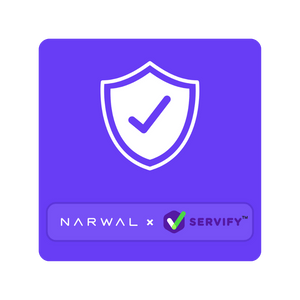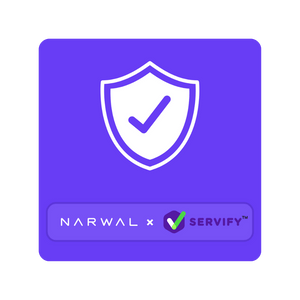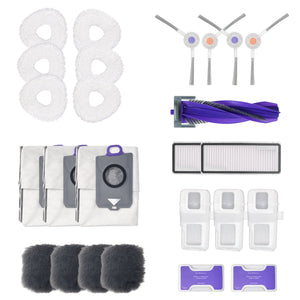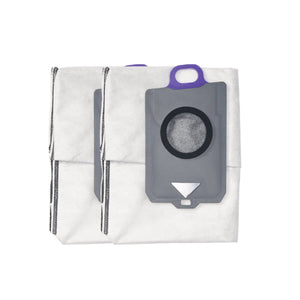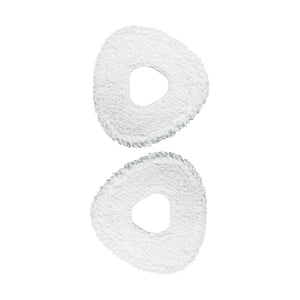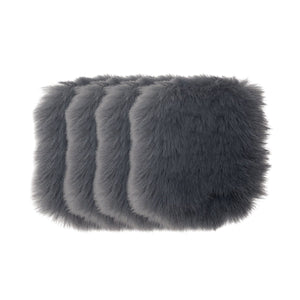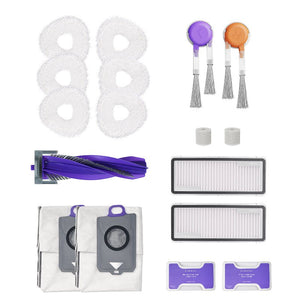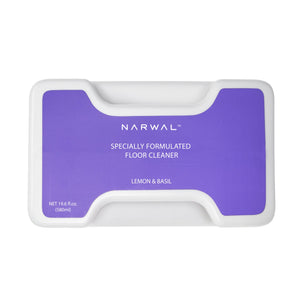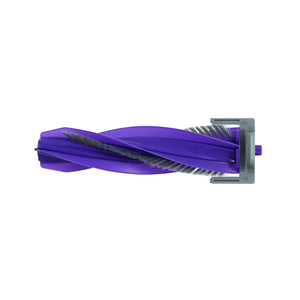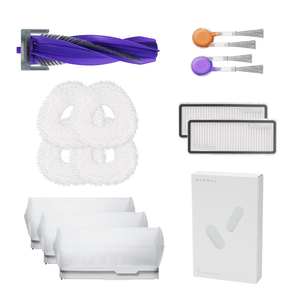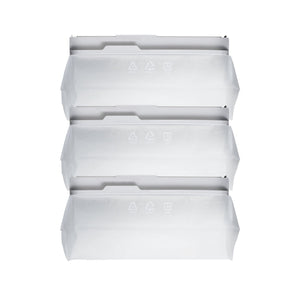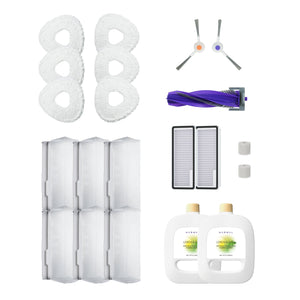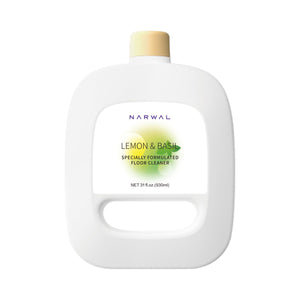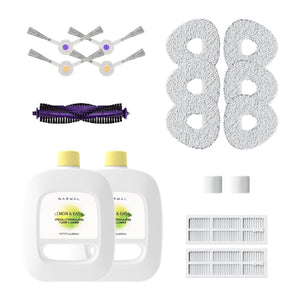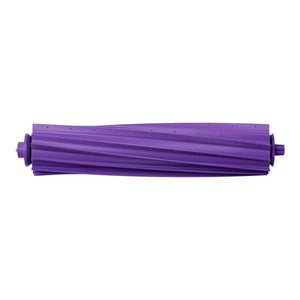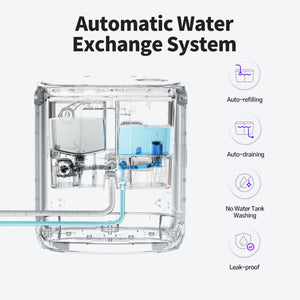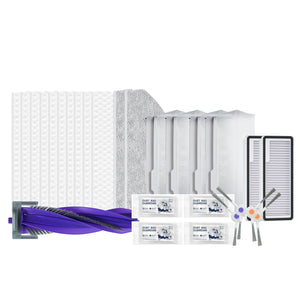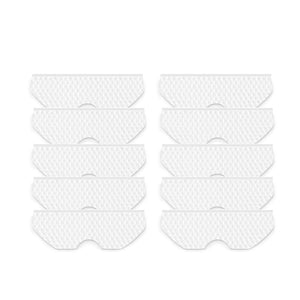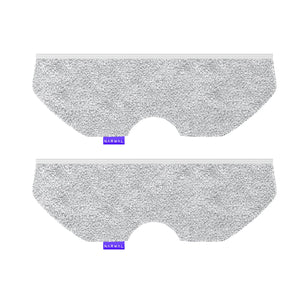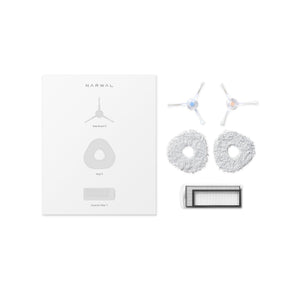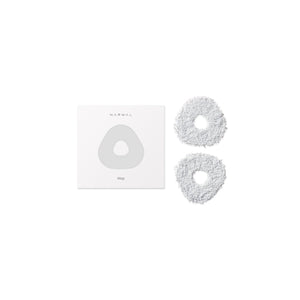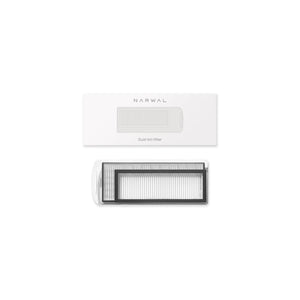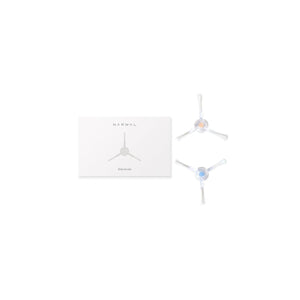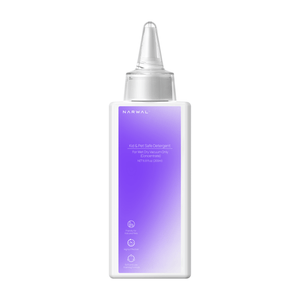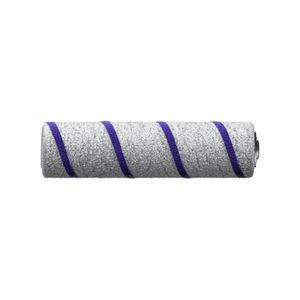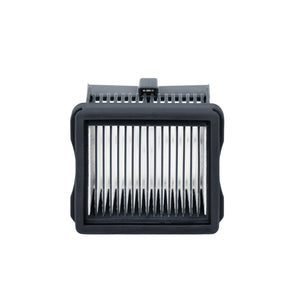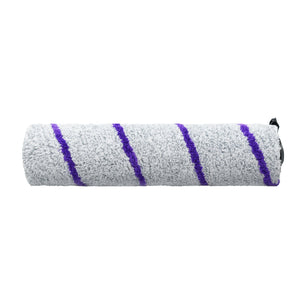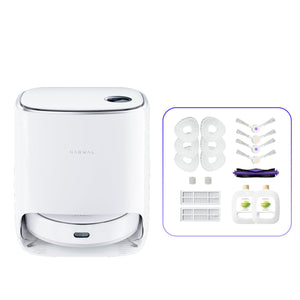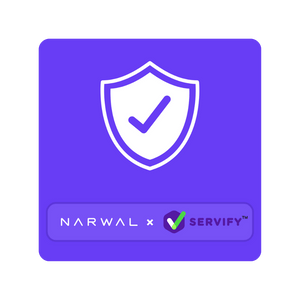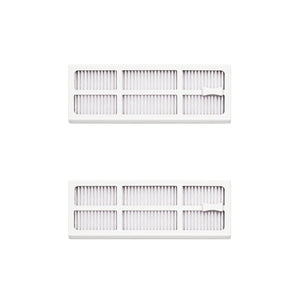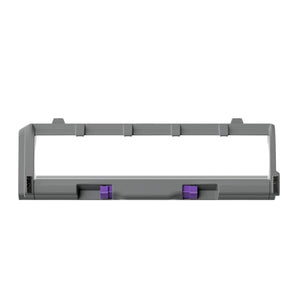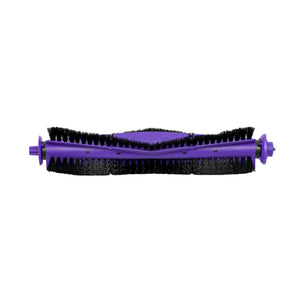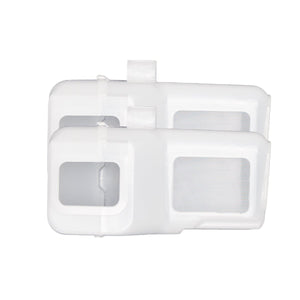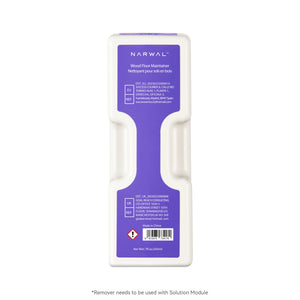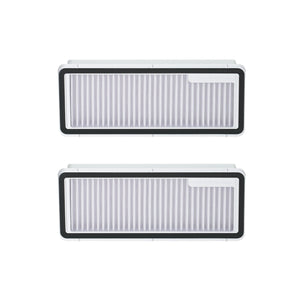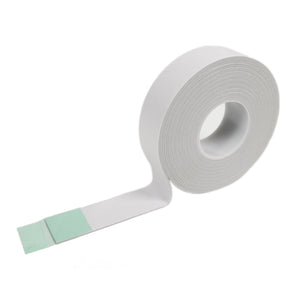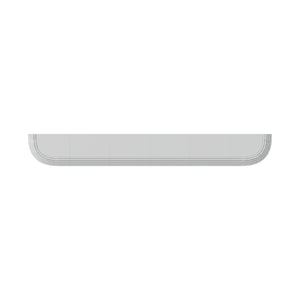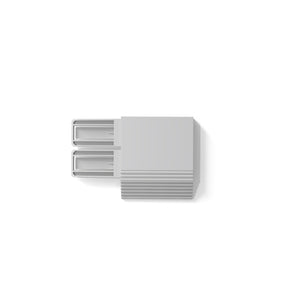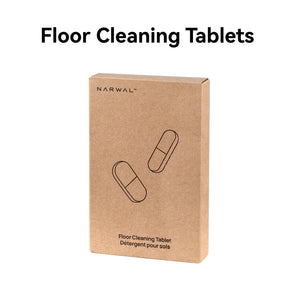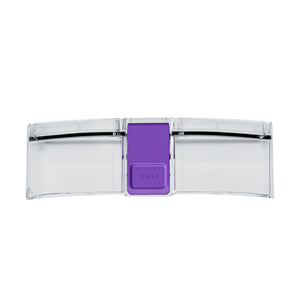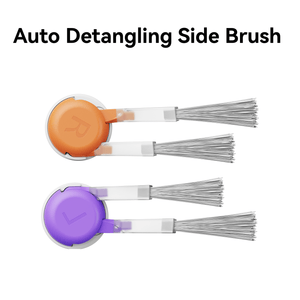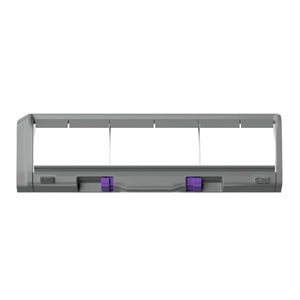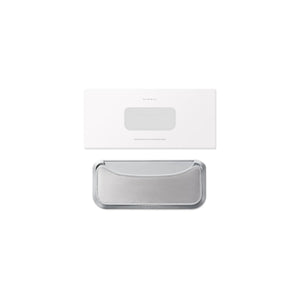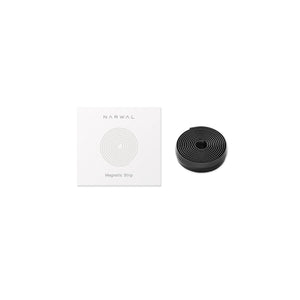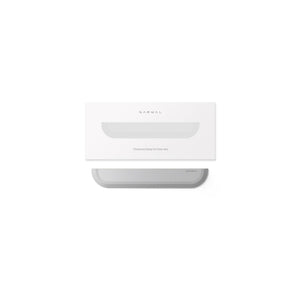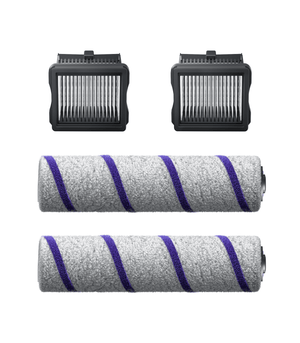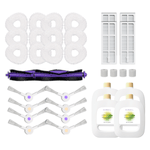So, you’re eyeing a robot vacuum, but then you stumble upon the LiDAR models, and suddenly, it’s a whole new world of “What’s this thing really doing?” If you're picturing a vacuum with a tiny laser beam and a mission to save your house from dust bunnies, you're not far off—but there's more to it.
In this article, we’ll cut through the jargon and show you exactly what LiDAR robot vacuums bring to the table. From understanding how they map your house (without bumping into walls) to figuring out if they’re actually worth the extra dollars, consider this your go-to guide. We'll also throw in some expert recommendations, and by the end, you’ll know exactly what to look for when choosing the right robot vacuum for your needs.
What is LiDAR Technology and How Does It Work in Robot Vacuums?
LiDAR (Light Detection and Ranging) is a technology that uses laser beams to measure distances and create precise maps of the environment. In robot vacuums, LiDAR helps the device navigate your home by detecting walls, furniture, and obstacles in its path.
Here’s how it works: The vacuum's LiDAR sensor sends out laser pulses that bounce off objects and return to the sensor. By measuring how long it takes for the pulses to return, the robot can calculate distances and map the room. This enables it to avoid obstacles and plan the most efficient cleaning path.
Unlike other navigation systems, LiDAR works in low light and creates highly accurate maps, making it ideal for complex or dark spaces. It allows the robot to clean more effectively, without bumping into walls or missing areas.
Is a LiDAR Robot Vacuum Worth It?
Yes, a LiDAR robot vacuum is worth the investment, especially if you want precise navigation, efficient cleaning, and a smoother, more consistent cleaning experience. It offers several key benefits that improve how the vacuum works, including better mapping, obstacle detection, and overall performance.

Unmatched Precision in Navigation and Mapping
LiDAR provides exceptional accuracy when creating a map of your home. This allows the robot to navigate with precision, ensuring it covers every corner without missing spots. Unlike traditional vacuums that follow random paths, LiDAR vacuums intelligently plan their route, minimizing unnecessary movements and optimizing cleaning time.
Superior Obstacle Avoidance and Safety
With LiDAR, the vacuum can "see" obstacles from afar, preventing it from crashing into walls, furniture, or other objects. The laser-guided system helps it detect and adjust its path before collisions happen, reducing the risk of damage and improving overall safety during cleaning.
Optimized Cleaning Efficiency and Path Planning
LiDAR technology helps the vacuum plan its cleaning route with precision. It avoids retracing the same areas and focuses on the most efficient path, cleaning larger areas in less time. This means faster cleaning sessions and better energy use, extending battery life.
Functionality in Low-Light or Dark Environments
One of LiDAR’s biggest advantages is its ability to function in both light and dark environments. Unlike visual navigation systems, which rely on light to detect surroundings, LiDAR can operate effectively in low-light rooms or under furniture, ensuring a full clean at any time of day or night.
Ideal for Complex Floor Plans and Multi-Room Cleaning
LiDAR is especially useful in homes with multiple rooms, hallways, or staircases. The technology can easily map complex layouts and transition from room to room, ensuring consistent coverage throughout the house. This makes it ideal for larger homes or spaces with intricate designs.
Reduced Cleaning Time and Battery Consumption
By mapping out the most efficient cleaning routes, LiDAR robots avoid wasting time and energy. They clean faster, use less battery, and can cover more ground before needing a recharge. This allows them to clean larger spaces in one go, providing a more efficient and less disruptive cleaning process.
Best LiDAR Robot Vacuums on the Market
If you’re considering upgrading to a LiDAR robot vacuum, here are three Narwal models that stand out for their advanced navigation, efficient cleaning, and smart features. Each one caters to different needs, ensuring there’s a vacuum suited to your home and lifestyle.
Best Overall LiDAR Robot Vacuum: Narwal Freo Z10
The Narwal Freo Z10 combines both vacuuming and mopping capabilities in one device. Equipped with LiDAR navigation, it offers precise mapping of your home, ensuring that every corner is cleaned without missing any spots. Its bionic hand scrubbing system mimics the human-like motion of cleaning, making it ideal for tackling difficult edges and corners. Additionally, the Zero Tangle System ensures that pet hair doesn’t get caught in the brushes, making maintenance easier.
This model is also designed to make cleaning as hands-off as possible, with features like self-cleaning mop and self-emptying dustbin that allow you to focus on other tasks while the vacuum handles the cleaning.
[cta:narwal-freo-z10-robot-vacuum-mop]
Best for Multi-Room Homes: Narwal Freo Z Ultra
The Narwal Freo Z Ultra is designed for large homes or multi-level spaces. Featuring dual HD cameras and AI-powered decision-making, it can detect obstacles and intelligently adjust its cleaning path. The 12,000Pa suction power and dual mopping system ensure that both wet and dry messes are efficiently cleaned. Its ability to adapt to different surfaces and dirt levels makes it an excellent choice for homes with a variety of floor types.
With AI DirtSense technology, the vacuum adjusts its cleaning power based on the amount of dirt it detects, ensuring that heavy messes are cleaned thoroughly while maintaining optimal battery life.
[cta:narwal-freo-z-ultra-robot-vacuum-mop]
Best for Pet Owners: Narwal Freo Pro
For homes with pets, the Narwal Freo Pro is an ideal choice. It features a Zero Tangle System designed to prevent pet hair from tangling in the brushes, which is a common issue in homes with pets. The vacuum uses a Reuleaux triangular mop to clean effectively, ensuring that both edges and corners are covered. With a 8500Pa suction power, it tackles dirt, debris, and pet hair with ease.
The smart dirt sensing system detects the level of mess and adjusts the cleaning behavior accordingly, ensuring thorough cleaning even in the most challenging areas.
[cta:narwal-freo-pro-robot-vacuum-mop]
Looking for the Right LiDAR Robot Vacuum? Here’s What to Consider
Choosing the right LiDAR robot vacuum can be tricky with so many options available. To help you make an informed decision, consider key factors, including navigation accuracy, suction power, battery life, and smart features, among others. Here’s a breakdown of the main aspects you should keep in mind before making your purchase.
Navigation Accuracy with LiDAR
LiDAR navigation is one of the standout features of these vacuums. It uses laser sensors to create an accurate map of your home, which allows the vacuum to clean efficiently without missing any areas. If you have tight spaces or multiple floors, you'll want a vacuum that offers high-precision mapping and can adjust to obstacles in real-time.
Floor Type Compatibility
Flooring plays a huge role in the vacuum’s performance. If you have a mix of hardwood, tile, and carpet, make sure the vacuum can adjust its suction power based on the surface. This ensures that your floors are cleaned efficiently without wasting battery or power.
Suction Power
Suction power is crucial for picking up dirt and debris. A vacuum with strong suction will clean more effectively, especially in homes with carpets or pets. Look for a vacuum with suction power of at least 2000Pa to ensure it picks up dust, hair, and larger debris.

Pet Hair Management
Pet hair can be difficult to clean up, but LiDAR vacuums that feature tangle-free brushes and strong suction are ideal for homes with pets. These vacuums are designed to capture and direct hair into the dustbin without getting tangled in the brushes, making maintenance much easier.
HEPA Filtration for Allergy Relief
If anyone in your household suffers from allergies, look for a vacuum with HEPA filtration. This will help capture fine particles like pet dander, dust, and pollen, ensuring your home is not only clean but also healthier to breathe in.
Smart App Control Features
Many LiDAR vacuums come with smart app control that allows you to set cleaning schedules, track cleaning progress, and customize cleaning zones. This feature is perfect if you want to control your vacuum remotely or schedule cleanings while you’re away.
Voice Assistant Integration
For added convenience, look for a LiDAR vacuum that integrates with Amazon Alexa or Google Assistant. This allows you to start or stop cleanings with simple voice commands, saving you time and effort.
Multi-Room and Large-Area Coverage
If you have a large home, make sure the vacuum can handle multi-room cleaning. Some LiDAR vacuums can clean large areas without needing to recharge in between. Consider a vacuum with a long battery life that can clean your entire home on a single charge.
Battery Life and Auto-Charging Capabilities
A vacuum’s battery life is key, especially if your home is large. Look for a vacuum that can clean for 90 minutes to 2 hours on a single charge. Additionally, auto-charging ensures the vacuum will return to its dock when it’s low on battery and resume cleaning once recharged.
Budget Considerations and Value Assessment
While LiDAR vacuums are typically pricier than standard models, they offer advanced features that justify the cost. When making your decision, consider which features are most important to you and balance them against your budget. If you don’t need every advanced feature, focus on key aspects like navigation accuracy and suction power.
LiDAR vs. Other Robot Vacuum Navigation Technologies
While LiDAR is renowned for its precision, other systems like visual navigation (vSLAM and camera-based systems), gyroscope-based navigation, and bumper-only systems are also used in robot vacuums. Let’s break down the differences and how each technology impacts the performance of robot vacuums.

LiDAR vs. Visual Navigation (vSLAM and Camera-Based Systems)
LiDAR and visual navigation (vSLAM) use different approaches to mapping and navigation. LiDAR uses laser sensors to create precise, detailed maps of the environment, ensuring the vacuum knows exactly where it’s been and where to go. This makes it more effective in low-light situations and for homes with complex layouts.
In contrast, vSLAM relies on cameras to create a visual map of the space. While vSLAM works well in bright environments and can offer a less expensive alternative, it often struggles in low light and may take longer to generate maps. LiDAR vacuums are typically faster, more precise, and better at handling obstacles and multiple rooms.
LiDAR vs. Gyroscope-Based Navigation
Gyroscope-based navigation uses sensors to estimate the vehicle's position by tracking its movement and rotation. While this method works well in basic settings, it’s less accurate and can result in missed spots or inefficient coverage in complex environments.
On the other hand, LiDAR vacuums build detailed, real-time maps of the home, ensuring better navigation and fewer missed areas. While gyroscope-based systems may be cheaper, they are generally less reliable when it comes to navigating complex layouts or ensuring thorough cleaning.
LiDAR vs. Bumper-Only Navigation
Bumper-only navigation is the simplest method, where the vacuum uses physical bumpers to detect obstacles and change direction. While effective for basic floor plans, it lacks precision and efficiency. The vacuum may take longer to clean the space, and could damage furniture by bumping into it.
LiDAR, however, allows the vacuum to detect obstacles from a distance and map the environment before making decisions. This results in faster cleaning, smarter route planning, and fewer collisions. The increased efficiency and reduced wear on furniture make LiDAR vacuums a superior choice for most households.
LiDAR vs. Hybrid Systems (e.g., Laser Inertial Navigation - LINS)
Hybrid systems, such as Laser Inertial Navigation (LINS), combine LiDAR with other sensors like gyroscopes to improve accuracy and stability. These systems can provide enhanced navigation in dynamic environments, but often come at a higher cost.
While hybrid systems may offer benefits in certain scenarios, LiDAR alone is often sufficient for most households. It provides excellent mapping accuracy and efficiency without the added complexity and cost of hybrid technology. If budget is a consideration, LiDAR vacuums provide great value while still delivering strong performance.
Are LiDAR robot vacuums suitable for commercial use?
Yes, LiDAR robot vacuums can be suitable for commercial use, especially in larger spaces like offices, warehouses, and stores. They offer precise navigation and efficient cleaning, making them ideal for maintaining clean floors in large areas.
Which devices besides vacuums use LiDAR?
Besides vacuums, LiDAR is used in devices like self-driving cars, drones, robotic systems, and 3D scanners. It helps with mapping, navigation, and object detection in these devices.
Does the Spot robot have LiDAR?
Yes, the Spot robot by Boston Dynamics uses LiDAR for mapping and navigation, allowing it to navigate complex environments and avoid obstacles effectively.
Simplify Your Cleaning with LiDAR Robot Vacuum
This guide has given you the essentials on LiDAR robot vacuums, from their precision navigation to efficient cleaning. With LiDAR, you can enjoy smarter, faster, and more thorough cleaning, tailored to your home’s needs.
By now, you understand the key features and can confidently choose the best LiDAR vacuum for your space. Don’t waste another moment on manual cleaning—take the next step.
Contact us today to find the perfect LiDAR robot vacuum and elevate your cleaning experience!









